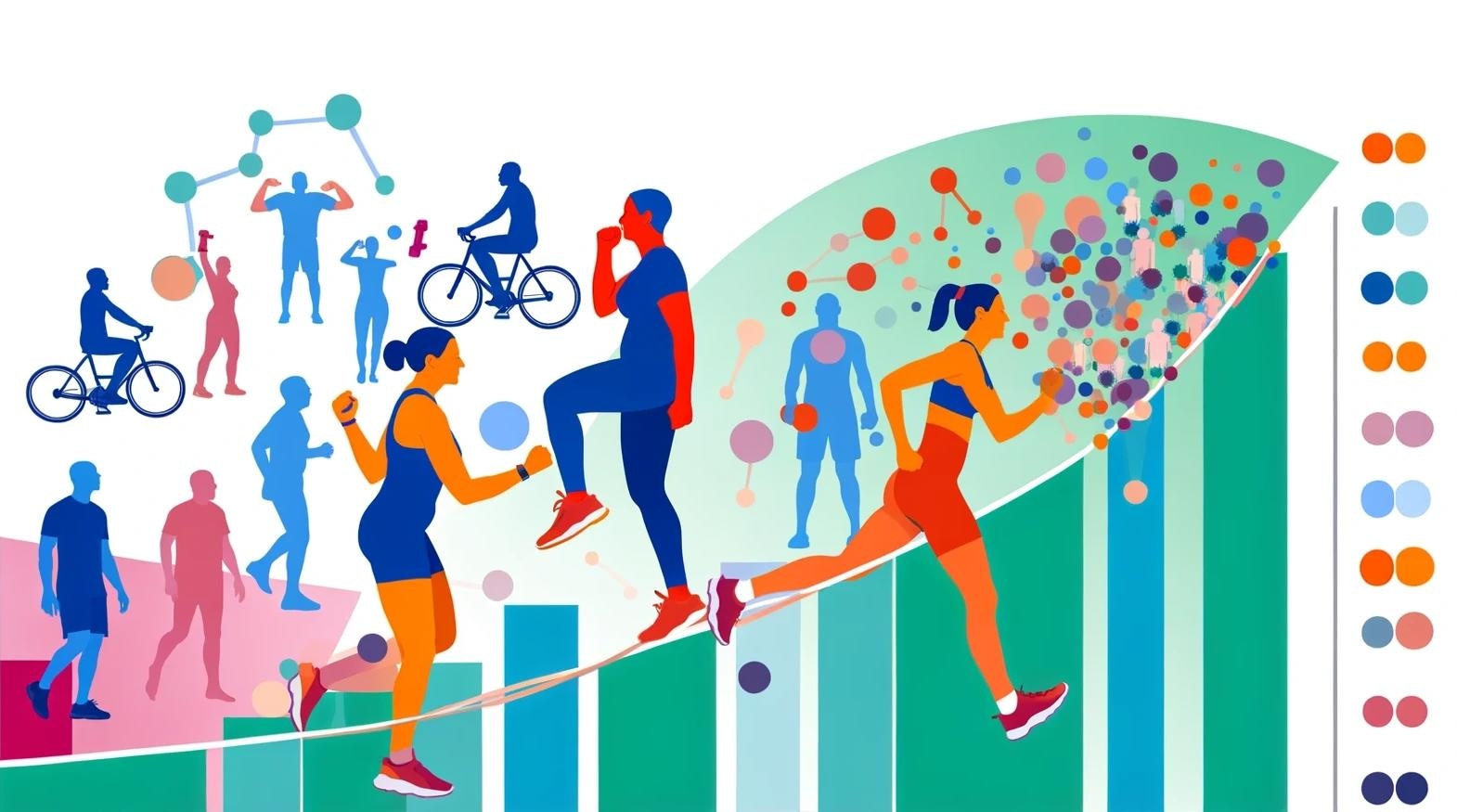In a recent study published in the journal natural mental health, A group of researchers used electronic diaries, accelerometry, and neuroimaging to investigate how physical activity acts as a mechanism to compensate for the negative effects of social isolation on mental health.
 study: Real behavioral and neural circuit markers of physical activity as a compensatory mechanism for social isolation
study: Real behavioral and neural circuit markers of physical activity as a compensatory mechanism for social isolation
background
Social isolation and loneliness are just as deadly as serious health risks such as obesity, heavy drinking, and smoking 15 cigarettes a day, severely impairing mental well-being and damaging the brain networks that regulate emotions. and increase the risk of mood disorders. The coronavirus disease 2019 (COVID-19) pandemic has heightened the need for interventions to combat the negative effects of social distancing on mental health. Physical activity is beneficial for emotional well-being and is associated with brain regions important for emotional regulation, making it a promising solution. However, further research is needed to understand the mechanisms, refine the intervention, and ensure its effectiveness among different groups.
About research
This study was precisely designed to comply with ethical standards for medical research, in line with the 2013 version of the Declaration of Helsinki. Conducted at the Medical School of Mannheim, University of Heidelberg, the Institutional Review Board approved the study, and all participants provided written informed consent. Participants were offered monetary compensation to compensate for their time and effort.
This study included two phases: the main study and a replication study. Participants were a diverse group of 317 healthy young adults aged 18 to 28 who were recruited from September 2014 to November 2018 and from December 2019 to July 2022 during the COVID-19 pandemic. It consisted of a replicate sample of 30 healthy adults aged 18 to 63 years, recruited by March. . These people, chosen to represent a wide range of demographics, were studied by wearing accelerometers to track their physical activity and using smartphone-based electronic diaries to record their social contacts and emotional states. participated in.
In addition to behavioral data, some of the participants underwent resting-state functional magnetic resonance imaging (fMRI) scans, specifically examining the default mode network (DMN), a neural marker associated with social isolation and risk of depression. We analyzed brain function with a focus on The research team relied on recent simulation studies showing that at least 200 participants are needed to obtain sufficient statistical power to determine the final sample size (n = 317) was determined to be appropriate. Data analysis included advanced statistical software and methodologies to explore the complex relationships between social contact, physical activity, and mental well-being. This included both within-participant effects and between-participant predictors of loneliness, utilizing advanced multilevel modeling techniques. Brain function data, specifically his DMN connectivity, was also analyzed as a factor.
research result
This study found that the relationship between temporary social isolation and decreased emotional valence was significantly moderated by individual physical activity. Specifically, we found that engaging in higher levels of physical activity significantly reduced the negative effects of social isolation on emotional well-being. Studies show that an average of 349 milligrams of physical activity per hour (1 milligram is 1/1,000th of 1 G (gravitational force at the Earth’s surface)), which is equivalent to walking at a pace of about 1 meter. It was suggested. 3 mph was necessary to counteract the negative effects of social isolation on my mood in everyday life. This compensatory effect of physical activity on mood was consistently replicated in her second sample observed during the COVID-19 pandemic, further supporting the initial findings.
At a neurobiological level, this study reveals that individuals with higher resting-state functional connectivity within the DMN are particularly adept at compensating for temporary socioemotional deficits through physical activity. became. This relationship highlighted the potential for physical activity to act as a powerful compensatory mechanism for people at higher psychological and neurobiological risk of experiencing loneliness and depression.
Additionally, this study investigated the benefits of physical activity from an interpersonal perspective and correlated physical activity with established psychological risk factors for mental health problems. Participants with small social networks but high levels of habitual physical activity had lower levels of loneliness traits compared to less active participants. Furthermore, it was found that those who effectively used physical activity as a compensatory mechanism were less likely to experience loneliness frequently during the first COVID-19 lockdown, and that regular physical activity The resilience it brings is highlighted.
Exploratory analyzes extend these findings to the pandemic context, demonstrating that even light physical activity and exercise done at home can effectively offset social-emotional deficits, and restrictions such as curfews and gym closures Practical implications for maintaining mental health are presented below.
conclusion
In summary, this study uses electronic diary and accelerometer data for detailed analysis beyond traditional questionnaire-based studies and shows that physical activity reduces the negative effects of social isolation on mood. . Moderate walking has been found to reduce social-emotional deficits, even more so in people at high risk for emotional disorders. The findings suggest that physical activity is an important strategy to strengthen mental health and guide post-pandemic interventions.
Reference magazines:
- Benedyk, A., Reichert, M., Giurgiu, M. et al. Real behavioral and neural circuit markers of physical activity as a compensatory mechanism for social isolation. nut. Mental Health (2024), DOI: 10.1038/s44220-024-00204-6, https://www.nature.com/articles/s44220-024-00204-6


